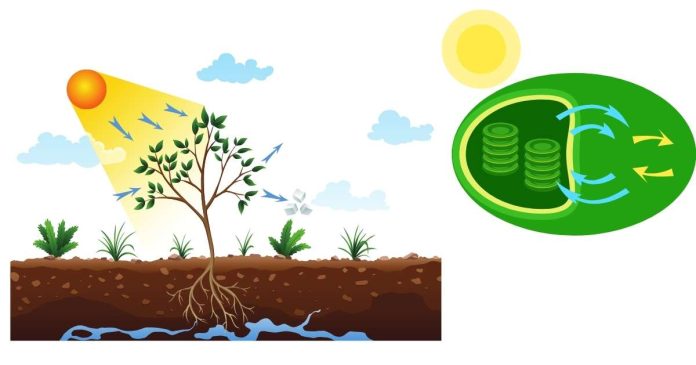Photosynthesis is a complex biochemical process that occurs in green plants, algae, and certain bacteria, converting light energy into chemical energy. Here’s a detailed breakdown of what happens during photosynthesis:
Photosynthesis Overview
Photosynthesis generally occurs in two stages:
- The Light-dependent Reactions (Light Reactions)
- The Light-independent Reactions (Calvin Cycle or Dark Reactions)
These processes primarily take place in the chloroplasts of plant cells, specifically within the thylakoid membranes (for the light reactions) and the stroma (for the Calvin Cycle).
1. Light-dependent Reactions (Light Reactions)
Location: Thylakoid membranes of the chloroplasts
Purpose: The light-dependent reactions convert solar energy into chemical energy in the form of ATP and NADPH, which are used in the next phase (Calvin Cycle).
Key Steps:
- Photon absorption: Chlorophyll and other pigments in the chloroplast absorb light energy, primarily from the sun. This light energy excites electrons in the chlorophyll molecules.
- Water splitting (Photolysis): The excited electrons are passed through a series of proteins known as the electron transport chain (ETC). To replace these electrons, water molecules are split into oxygen (O2), protons (H+), and electrons. This is the source of the oxygen gas produced during photosynthesis.2H2O→O2+4H++4e−2H_2O → O_2 + 4H^+ + 4e^-
- ATP and NADPH formation: The electrons moving through the ETC create a proton gradient across the thylakoid membrane. This proton gradient drives the production of ATP via ATP synthase. Meanwhile, the electrons are transferred to NADP+ to form NADPH, a carrier molecule for high-energy electrons.
Products of Light-dependent Reactions:
- Oxygen (O2): Released as a byproduct when water is split.
- ATP: Used as an energy source for the next phase (Calvin Cycle).
- NADPH: Used to carry high-energy electrons for the Calvin Cycle.
2. Light-independent Reactions (Calvin Cycle)
Location: Stroma of the chloroplast
Purpose: The Calvin Cycle uses the ATP and NADPH produced in the light-dependent reactions to convert carbon dioxide (CO2) into glucose (C6H12O6) and other sugars.
Key Steps:
- Carbon fixation: CO2 from the atmosphere is captured by the enzyme RuBisCO and attached to a five-carbon molecule called ribulose bisphosphate (RuBP), resulting in an unstable six-carbon compound that quickly breaks down into two molecules of 3-phosphoglycerate (3-PGA).
- Reduction phase: ATP and NADPH produced in the light-dependent reactions are used to convert the 3-PGA molecules into glyceraldehyde-3-phosphate (G3P), a three-carbon sugar. This process requires the input of energy.
- Regeneration phase: Some of the G3P molecules are used to regenerate RuBP so the cycle can continue. The remaining G3P molecules are used to form glucose and other sugars.
Products of the Calvin Cycle:
- Glucose (C6H12O6): This is the primary product of the Calvin Cycle. It can be used as an energy source for the plant or stored in the form of starch for later use.
- Other carbohydrates: Besides glucose, the Calvin Cycle can produce other sugars, such as sucrose, which can be transported within the plant.
Final Overview of Photosynthesis
The overall chemical reaction for photosynthesis can be summarized as:
6CO2+6H2O+light energy→C6H12O6+6O26CO_2 + 6H_2O + light \, energy → C_6H_{12}O_6 + 6O_2
- Carbon dioxide (CO2) is taken in from the air.
- Water (H2O) is absorbed through the roots.
- Light energy is absorbed by chlorophyll and other pigments.
- The products are glucose (C6H12O6), which stores chemical energy, and oxygen (O2), which is released into the atmosphere.
The Role of the Products:
- Glucose: It is a vital source of energy for the plant itself. It can also be converted into starch and stored for future use, or it can be used in cellular respiration to generate ATP.
- Oxygen: Oxygen is released as a byproduct into the atmosphere, which is essential for the respiration of almost all living organisms, including animals and humans.
In this way, photosynthesis sustains plant life and supports nearly all life on Earth by providing oxygen and forming the base of the food chain.


